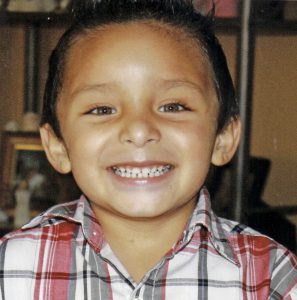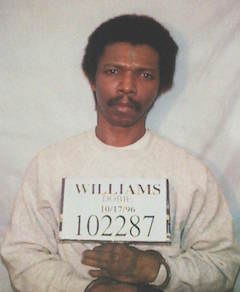As you are coming to the end of your long journey, you’re overwhelmed with the idea that you’ll be home soon, accompanied by warm, familiar faces. However, when you return home, you’re not welcomed by friends and family, but by silence and only the howl of the wind. You look around and not a single soul is in sight. Not one person in your home or in your whole village. A frightening scenario, isn’t it? This was the startling reality that John White and his fellow colonists were faced with when they returned home from their long voyage. His home was none other than the infamous Roanoke Colony.

In 1587, John White led 113 men, women, and children to Roanoke island on behalf of Queen Elizabeth I, in order to establish a New World colony, and claim riches for the queen and people of England.1 The land was somewhat familiar as it had been a previous military outpost.2 However, its first attempt at establishing a colony there had failed. John White and his men were determined not to fail their Queen on this attempt. They especially did not want to fail their investor, Sir Walter Raleigh, like others had in the past. So they went to all extents to make sure their colony’s needs were met.3 The colony seemed to settle well; however, they quickly outgrew supplies, which were essential for the long-term establishment of the colony; so now governor of Roanoke, John White, sailed back to England in order to restock. Upon his arrival in London, he was met with war with Spain and the Spanish Armada, England’s enemy at the time. Storms and many other factors made the return back to Roanoke a long one, one of years, leaving the colonists to wonder when their leader would return.4
Once John White and his men returned, Roanoke was bereft of all its colonists. They recalled that on their way to Roanoke, once already on land, they found a few footprints from Indians.5 However, they made nothing of it at the time. When they reached the village, White came across the letters “CRO” carved on a tree and the word “CROATOAN” carved on a post. Upon further inspection, it seemed that all the houses that the Roanoke Colonist were living in had been dismantled. After seeing this, White was more at ease because he believed that they had relocated to Croatoan, where the Croatoan tribe lived. This was due to the fact that White told the colonists that if they ever relocated, they were to carve the name of their new location somewhere visible. If the move or escape was out of distress, they were also to carve a Maltese cross, but none were in sight. One small thing bothered White though. He had told the colonists to hide his valuables underground, but he found that some were scattered and others were lost. In the end, for a reason unknown, White only looked for the colony one time, but didn’t find them. After this failed attempt, he made no others.6
One question still lingered in the mind of many others: what happened to the Roanoke colonists? It’s said that they were never seen again by Europeans, but there were also many speculated accounts of their whereabouts and fate. In 1608, John Smith wrote in his book that the Indians reported to him of people that looked like him. George Percy, another colonist, reported seeing a white boy with blonde hair among the Indians. Smith later sent two missions towards the south in order to find evidence of the remaining colonists, eventually learning that they were killed.7

Later, a twenty-one-quartz stone was discovered that is believed to have been a “grave marker” for the Roanoke deceased. On the smooth side of the stone was a cross and on the other were passages, speaking of deaths within the colony along with the years.8 As a last matter, in 1612, writer William Strachey reported that the Roanoke Colony did indeed live in harmony with the Chesapeake Indians for twenty-five years. Both the Indians and colonists shared knowledge and lived together until Powhatan, a leader of another Indian tribe called the Powhatan, slaughtered the colonists and the Indians sheltering them in fear that a rival to him would appear from within their tribe. A few of the colonists escaped and were later spared when they were found due to the fact that they worked well with copper, making them valuable. Still many wondered if these were facts or just stories that people wanted to hear.9 In the end, all the evidence points to the fact that the Roanoke colonists are not lost to history, but were rather killed off by brutal Indians. There is no mystery left, it’s just a matter of connecting the dots.
- The Gale Encyclopedia of the Unusual and Unexplained, 2003, s.v. “The Desertion of Roanoke,” by Brad Steiger and Sherry Hanson Steiger; Karenne Wood, “The Roanoke Colony,” South Atlantic Review 77, no. 1/2 (2012): 178-79. ↵
- Lee Miller, Roanoke Solving the Mystery of England’s Lost Colony (London: Pimlico, 2001), 7-9. ↵
- Karenne Wood, “The Roanoke Colony,” South Atlantic Review 77, no. 1/2 (2012): 178-79. ↵
- Lee Miller, Roanoke Solving the Mystery of England’s Lost Colony (London: Pimlico, 2001), 10-11. ↵
- Karen Odahl Kupperman, Roanoke The Abandoned Colony (New Jersey: Rowman & Allanheld, 1984), 133-135. ↵
- Karen Odahl Kupperman, Roanoke The Abandoned Colony (New Jersey: Rowman & Allanheld, 1984), 136-137. ↵
- Karen Odahl Kupperman, Roanoke The Abandoned Colony (New Jersey: Rowman & Allanheld, 1984), 137-139. ↵
- Haywood J. Pearce, “New Light on the Roanoke Colony: A Preliminary Examination of a Stone Found in Chowan County, North Carolina,” The Journal of Southern History 4, no. 2 (1938): 148-150. ↵
- Karen Odahl Kupperman, Roanoke The Abandoned Colony (New Jersey: Rowman & Allanheld, 1984), 139. ↵



114 comments
Steven Hale
I visited Roanoke several years ago and the tour guide believed at the time that there were no credible explanations for the settlers’ disappearance. However, the theory you present here makes sense. If the settlers did decide on their own to settle somewhere else and were only attacked by the Indians much later, they would not have left the distress signal at the Roanoke colony. I think White’s possessions being left in disarray can be explained by the fact that he was gone for so long, and the settlers could have felt that he abandoned them, and therefore they did not look after his belongings.
Christopher Hohman
cool article. The disappearance of the Roanoke colonist is really mysterious. The weirdest thing about it to me was that the town was almost intact with White returned. It did not look like it had been ransacked nor had it been burned down. I always thought that that meant the colonist must have left in a hurry. Now I can see that they were most likely killed off by native americans
Noah Laing
Ever since I’ve heard about the Roanoke Colony, I’ve been extremely intrigued to what actually happened to the colony. I’ve heard many theories, some which are very far fetched but still interesting. However, this theory stated in the article that they lived with other Indians in peace for some time until another Indian tribe brutally killed them seems to be the most likely. Great article.
Kailan Pena
I’ve heard of this story before, just never as in-depth as this article put it. I also heard of the theory that the colonists moved in with the natives, but I didn’t really know the validity of that theory. I feel it’d be great to think that the missing colony loved in harmony with the natives, but it’s sad it isn’t proven true. Great article though, very informative and interesting as well.
Monica Avila
In high school, in my 11th grade history class I learned about the lost Roanoke colony. However, this article really went more into depth on all the theories on where the missing colonists went. The little blonde boy spotted in the Indian tribe was one of the more interesting and surprising theories to me. The mystery behind the carving the tree has always peaked my interest, as to why that would just be left behind. This article did a great job at detailing every aspect of the history and mystery behind this very important aspect of history.
Yahaira Martinez
I had always heard of “the lost colony” and i was always curious about what they meant, like how does a colony get lost? Everytime i looked online, it was all conspiracy theories and stories that sounded more fake than real. After reading this article however, i learned alot of new things about this colony as whole. The conclusion that they stated in the article with the colony coming to an end because of the Indians killing them off makes sense once thought off. Very amazing article.
Nathan Hudson
I learned of Roanoke and of its mysterious disappearing colonists, but not to the extent of this article. It was interesting to read about how John Smith was linked to Roanoke as well because John was around may years later than Roanoke was. I enjoyed reading this article because I love a good mystery, but seeing that it isn’t a mystery at all, I still learned a good bit.
Auroara-Juhl Nikkels
I remember learning about the lost colony of Roanoke in middle and high school, but my teachers never really had any answers as to why the colony disappeared to teach us. Your article had some information I had never heard before, like the stone with the death dates on it. Your article was short, but very informative and well written. Good job!
Andrew Dominguez
Ive never heard of this happening in history, but it seems very interesting on how colonies were trying to be established. It seems scary, to once have a home, than when you come back from a trip, your colony is gone. What i thought was interesting was the blonde hair among the tribe. It must have been shocking for the indians to see blond hair, since they never seen it before. Another thing is if they lived in harmony, what caused the dispute.
Carlos Vazquez
I really enjoyed reading this article, the mystery of the Roanoke colonist has always intrigued me. Although now it’s mostly known because of conspiracy theories and because of the Tv show American Horror story. The fate of the colonist is still unknown but many assume they died as a result of an attack from the local natives, they might have also suffered from lack of resources.